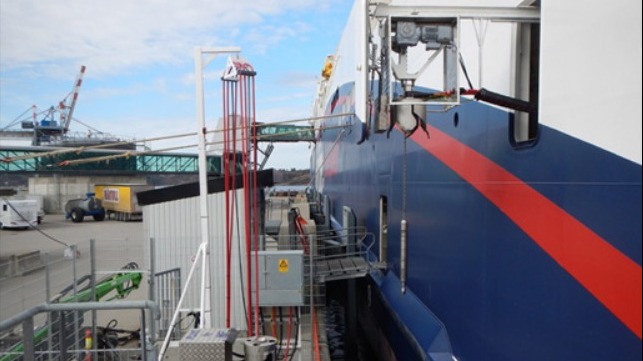Renewed Interest in Shore Power due to EU and Environmental Regulation

The EU parliament’s actions calling for a ban on greenhouse gas emissions from berthing ships at berth is adding a renewed impetuous in the drive towards installing shore power capabilities on ships. While the technology for cold ironing is well established, the EU initiatives and the overall efforts to improve the environment around major ports are contributing to an increase in the market.
“We used to do shore power projects on ships some years ago, but the market was too slow,” says Aleksander Askeland CSO at Yara Marine Technologies. “Now, however, with new regulations and grants supporting shipowner’s shore power investments, we are back in the business of shore power.”
The EU proposed ban which would be in effect by 2030 was included in the first reading of the proposed revisions to the MRV Regulation. The ban would include any ships with a gross tonnage of 5,000 or more arriving at, within, or departing from ports under the jurisdiction of an EU Member State. Requiring the elimination of GHG emissions within less than nine years means ships connecting to power from shore, and possibly batteries.
In addition to the EU Parliament initiative, several ports are already introducing a ban on GHG emissions due to take effect by 2025. In China, they are setting the rules so that shore power shall be used if a cruise ship is at berth with onshore power supply capacity for more than three hours in the emission control areas. Numerous ports in Europe, North America, and Asia have also announced plans to install or expand their shore power capabilities.
“This is a major step for the industry.,” says Askerland. “It will cut emissions tremendously. Both GHG emissions, but also local air pollution, like black carbon, SOx, and NOx, saving thousands of lives, cleaning up the air in our cities.”
Responding to the renewed opportunities, Yara Marine recently formed a partnership with NG3 to relaunch cold ironing in their green tech portfolio. “Yara Marine’s ship-to-shore technology can help to save fuel that would otherwise be used to power vessels while in port. According to the Fourth IMO GHG Study, shore power can reduce overall GHG emissions from ships quite a bit. In addition, it will contribute to better air quality in the proximate port area, facilitate maintenance of the ship’s engines and generators, and reduce noise from the vessel at berth,” Askeland explains.
With a focus on the IMO 2030 and 2050 targets, Askeland believes there will be an increasing focus on new technologies that will enable ships to meet these goals. Yara Marine Technologies says that in addition to the renewed interest in cold ironing, it will also invest in several other technologies that can contribute to reducing and eliminating GHG emissions.
